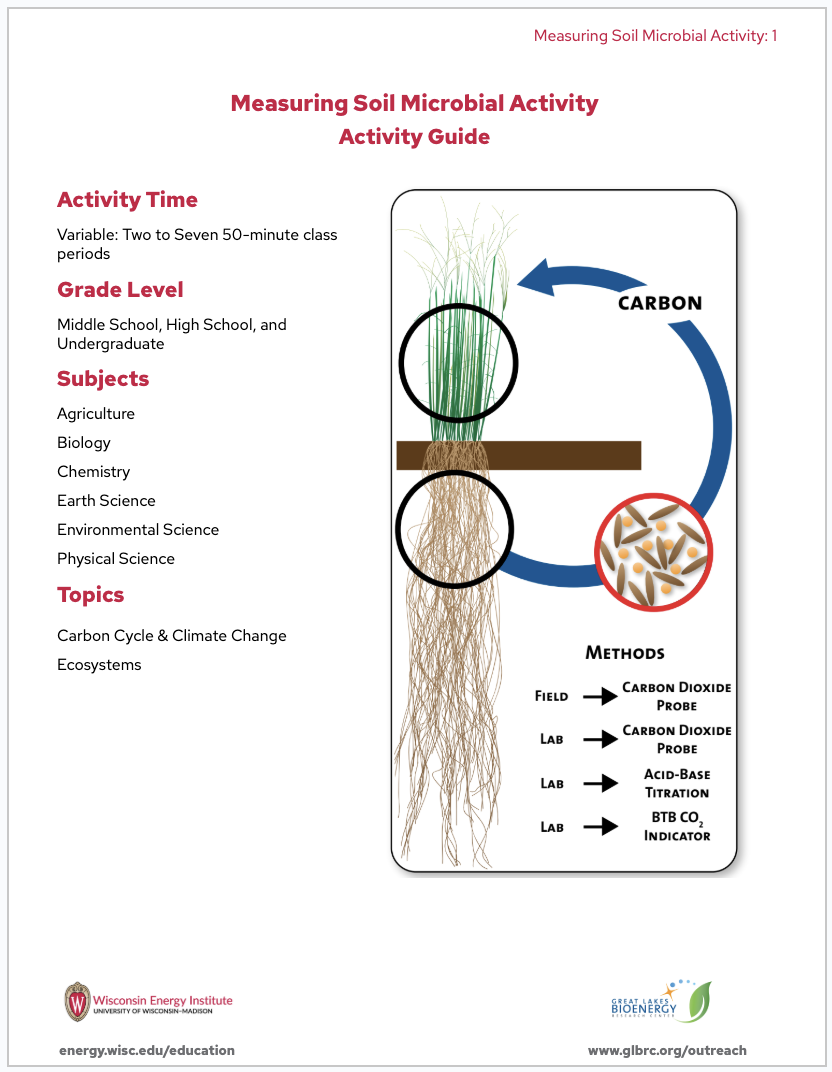Measuring Soil Microbial Activity
Middle School
High School
Undergraduate
Investigation

This activity examines how soil microbes, such as bacteria and fungi, are involved in carbon cycling. Students design experiments to explore the relationship between microbial respiration rates and soil variables such as temperature, habitat, soil type, and agricultural management choices. Four methods for measuring CO2 released from soil are provided, one in the field (CO2 probe), and three in the lab (CO2 probe, bromothymol blue (BTB), and acid-base titration).
Access Activity Materials!

Subjects
Agriculture
Biology
Chemistry
Earth Science
Environmental Science
Physical Science
Topics
Carbon Cycle & Climate Change
Ecosystems
Concepts/Skills
Decomposition, respiration, carbon sequestration, climate change, microbial ecology, soils, carbon cycle, data analysis, scientific argumentation
Prior Knowledge
Familiarity with the components of experimental design, data collection and data analysis. Basic understanding of cellular respiration, carbon cycle, role of soil microbes in ecosystems, and role of CO2 as a greenhouse gas.
Time Required
Varies by technique and experimental design. Two to seven 50-minute class periods spread out over a one to two week period.
Required Supplies
Varies depending upon activity. See activity description for details. Basic lab method requires either, BTB (bromothymol blue), CO2 probe or NaOH titration set-up. Field method requires CO2 probe and chamber constructed from 5-gal. bucket or similar vessel.